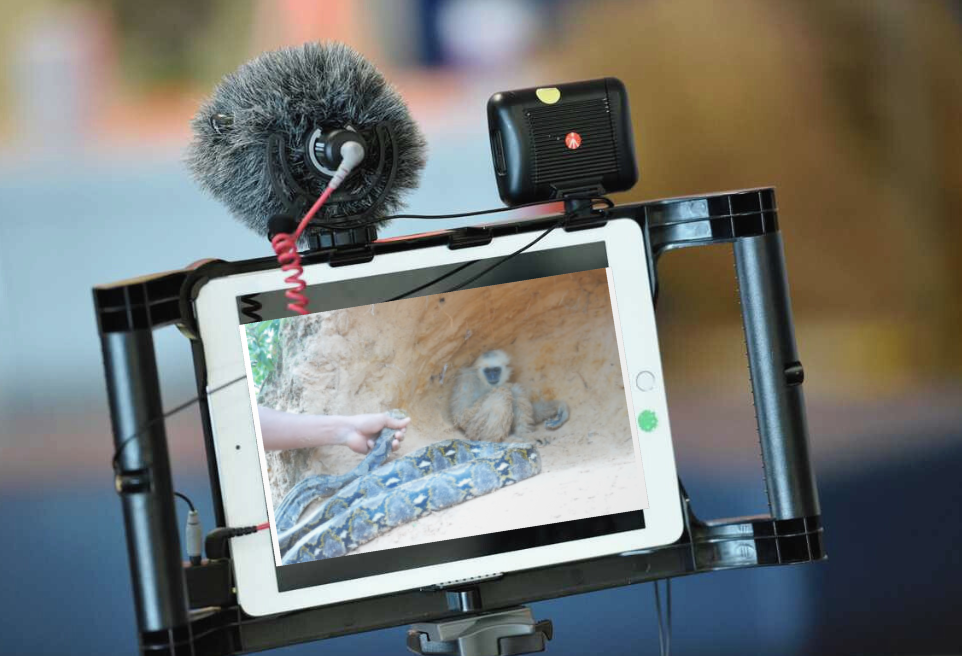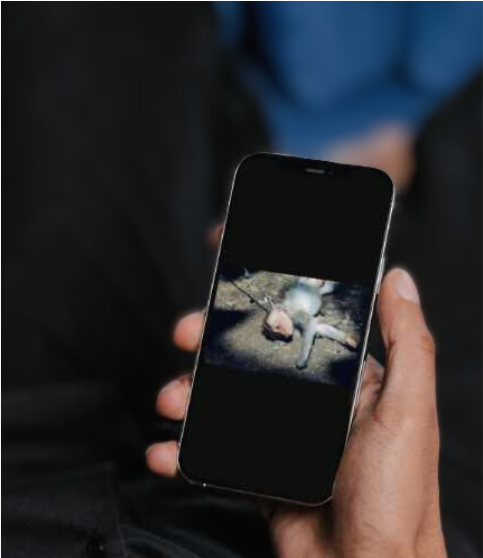
Estimated reading time: 1 minute
In recent years, the internet has seen a surge in so-called ‘animal rescue’ videos; however, disturbingly, not all of these are genuine. Some content creators are capitalising on the viewers’ empathy and love for animals by creating – or staging – fake animal rescue videos.
The emotional pull of these videos is undeniable, but the truth behind them is far from heartwarming. The animals, used as pawns in a deceptive game, are exploited and subjected to stress, harm and even death the sake of views, likes, and ultimately, revenue.
However, it’s not just the animals in the video who suffer. While they undeniably are the worst victims of the popular trend, the very nature of the fake rescue videos can cause ongoing damage to the viewers, as well as legitimate animal welfare organisations.
How to spot a fake animal rescue video
These fake animal rescues are carefully orchestrated. Once you know what to look out for, it’s simple to spot, but many viewers continue to be deceived because of their genuine care for animals.
Animals are deliberately placed in dangerous situations, such as being trapped in mud or caught in fences, and then filmed being ‘rescued’. The emotional appeal of these videos is undeniable, but the reality is far from heartwarming. The animals, subjected to stress and potential harm, are mere tools in a scheme designed to manipulate viewers’ emotions for financial gain and popularity.
As we highlighted in our first article on the topic (link at top of page), identifying these deceitful videos can be challenging, but there are signs to watch for.
Repetition is a red flag; if the same person or animal appears in multiple rescue scenarios, it’s likely staged.
Also, look for inconsistencies in the setting or the animal’s behaviour. An animal in distress would typically show signs of panic, which usually isn’t the case in a staged video.

Psychological damage to viewers
The animals involved in these staged videos are often subjected to stressful and harmful situations. This can lead to long-term psychological trauma for the animals. Psychologists and animal welfare experts highlight that the stress and fear induced in these animals can have lasting effects on their well-being.
Experts say the viewers can also suffer psychological trauma. For children especially, these videos can cause extreme long-term harm and consequences.
This manipulative practice can have significant psychological effects on viewers and animals alike.
For the viewers, these videos can cause emotional distress and desensitisation.
The desensitisation effect from fake animal rescue videos can occur because, while viewers believe they are witnessing genuine acts of kindness, they are actually being exposed to repeated, orchestrated scenarios of animal distress and supposed rescue.
Even under the guise of rescue, psychologists say that repeated exposure to the videos can dull the viewers’ emotional response. They might become less sensitive to actual cases of animal suffering, as their ability to discern real distress from staged scenarios is compromised.
This blurring of reality can diminish the impact of genuine animal welfare issues, as viewers might start perceiving them as less severe or urgent.
Additionally, these videos can lead to a warped understanding of animal welfare and rescue operations.
Best food for dogs and cats: 5 top ingredients for a healthy pet diet
- Whole animal proteins, including chicken, turkey, or salmon.
- Healthy fats and omega-3 fatty acids help brain health and also gives pets a shiny coat.
- Complex carbohydrates give pets sustained energy.
- Fruits and vegetables are great for boosting immunity.
- Probiotics and prebiotics to gut health.

TO SAVE A STARFISH by Jennifer Blough: This workbook is a great resource for animal welfare advocates with compassion fatigue or burnout. Author Jennifer Blough is a mental health therapist and former animal welfare professional.
Products to keep your pets safe
While it’s unlikely that your beloved pet will fall victim to a fake rescue video, there are other common dangers that they could encounter. From getting lost to being injured, it’s essential to be prepared and protect your best friend with the right products.
Here are some of our favourite and highly recommended items to ensure your pet’s safety and well-being at all times. These products not only help in preventing potential hazards but also provide peace of mind for pet owners.
- Pet surveillance camera: Monitor your pets in real-time and ensure their safety with high-quality pet cameras, allowing you to spot any unusual behaviour or potential dangers. Amazon has plenty of choices, from the more affordable like this one to the more expensive devices, such as this robot camera by Enabot EBO.

- Pet GPS tracking devices: These devices ensure your pet’s safety by allowing you to monitor their location, reducing the chances of losing them in unfamiliar places. Again, there’s plenty of options to choose from, suiting all budgets, when looking for the right GPS for your pet. The Tractive GPS pet tracker is one of our favourites, along with their device specifically designed for tracking lost cats.

Potential damage to legitimate animal welfare organisations
Fake animal rescue videos can significantly damage the credibility and efforts of legitimate animal welfare organisations. They can create mistrust among the public, leading to scepticism about real rescue operations.
Additionally, these fake videos can overshadow the real challenges and successes of animal welfare organisations. Sadly, this can ultimately divert attention and resources away from where they are genuinely needed.
The propagation of such misleading content undermines the hard work and dedication of real animal rescue teams.
They could also potentially hinder their ability to assist animals in need.
And because exposure to staged rescues can lead viewers to become cynical. Which could subsequently impact their trust in other animal welfare initiatives and organisations.

How to spot a fake animal rescue video
- Repetition of rescuers or animals: If the same person or animal appears in multiple rescue scenarios, it’s likely staged.
- Inconsistencies in setting: Look for elements in the environment that seem out of place or artificially arranged.
- Lack of genuine distress: Observe the animal’s behaviour; a lack of panic or stress can indicate staging.
- Overly dramatic scenarios: Extremely dramatic or dangerous situations that seem too perfect or cinematic might be fabricated.
- Immediate filming: If the video starts right at the moment of rescue without prior context, it could be planned in advance.
The future of fake rescue videos
Experts urge social media users to look for signs of authenticity in rescue videos. It’s also extremely important to report any suspicious videos you spot.
Social media users play a crucial role in combating this issue. By being vigilant with the content, viewers can help reduce the spread of these harmful videos.
Supporting the work of legitimate rescue organisations is vital. It helps ensure they receive the recognition and resources they need.
By doing so, we can help protect animals from exploitation. And we can also support genuine rescue efforts that make a real difference to animals.
AnimalFriendlyLife.com.au is a participant in affiliate programs. This means that when you click on links to various products on this site and make a purchase, we could receive a commission. We only recommend products and services that we believe will add value to our readers.


